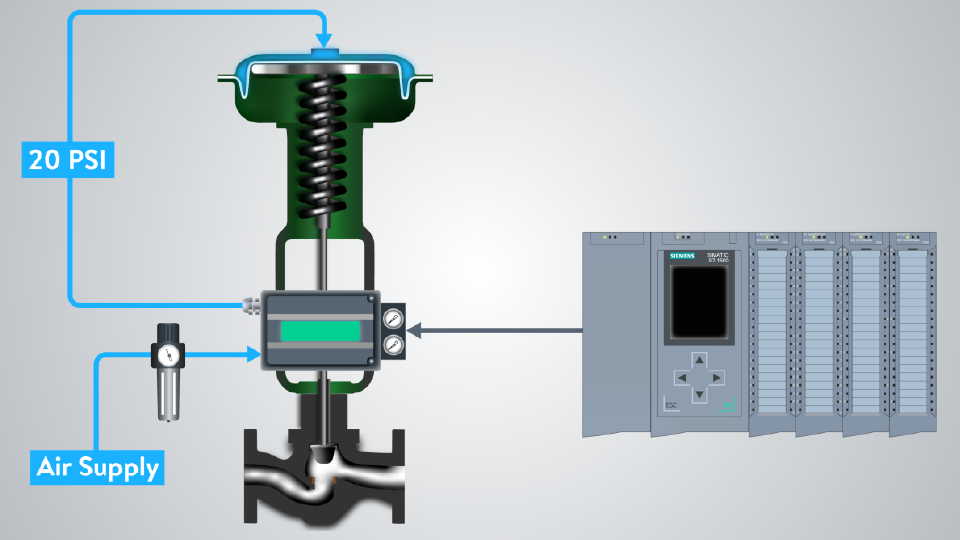The Role of Control Valves in Fluid Circulation Management Systems
The Role of Control Valves in Fluid Circulation Management Systems
Blog Article

Maximize Power Financial Savings and Comfort With Advanced Building Automation Controls
In the realm of modern design and center administration, the assimilation of advanced structure automation controls stands as an essential advancement. By taking advantage of the power of automation, buildings can adapt, react, and advance in ways that were as soon as unbelievable.
Energy Efficiency Perks
Energy effectiveness benefits can considerably reduce power intake and operational prices in buildings. Energy-efficient systems, such as advanced structure automation controls, can optimize the usage of resources like air conditioning, home heating, and illumination, leading to lower energy costs over time.
Furthermore, improved power efficiency can lengthen the life expectancy of structure tools and systems. By operating much more efficiently, a/c systems, lighting fixture, and other structure components experience much less deterioration, leading to minimized maintenance and replacement expenses. In addition, energy-efficient structures often command greater home worths and rental rates, supplying long-term economic advantages to owners.
Moreover, power efficiency can boost owner convenience and efficiency. Correctly regulated indoor environments with ideal lighting and thermal conditions develop an even more helpful and enjoyable office, causing boosted employee complete satisfaction and performance. Overall, the energy effectiveness advantages connected with sophisticated structure automation controls are multifaceted, including price savings, environmental stewardship, and owner well-being.
Enhanced Convenience Control
Enhancing comfort control in structure atmospheres needs a sophisticated combination of advanced automation systems for optimum owner wellness. By utilizing innovative building automation controls, centers can customize the indoor setting to fulfill the certain needs and preferences of owners. control valves.
Enhanced comfort control exceeds standard temperature level modifications. It includes attributes such as individualized settings, occupancy sensing units, and all-natural light usage to develop a vibrant and responsive environment. By integrating these advanced controls, structures can not just boost comfort yet likewise improve energy efficiency by enhancing system operations based on real occupancy and usage patterns. Eventually, prioritizing passenger comfort via sophisticated automation systems brings about a more delightful and healthier indoor atmosphere.
Functional Performance Improvements

Moreover, the application of real-time surveillance and analytics tools allows building operators to recognize energy ineffectiveness and functional anomalies without delay. By continuously checking energy usage patterns and system performance metrics, modifications can be made in real-time to optimize energy usage and make certain peak operational efficiency. control valves. Furthermore, including need action approaches right into building automation controls can even more enhance operational performance by dynamically readjusting energy usage based upon grid conditions and pricing signals
Indoor Environment Optimization
Reliable interior environment optimization is a fundamental facet of structure automation controls, making sure owners' comfort and wellness while making the most of energy financial savings. By making use of advanced sensing units and controls, constructing automation systems can continuously readjust and keep an eye on temperature level, moisture degrees, air high quality, and air flow to produce an ideal interior setting. Maintaining comfy and constant problems not only enhances resident fulfillment however also boosts productivity and overall well-being.
Interior climate optimization also plays an important function in power effectiveness. By fine-tuning air conditioning, air flow, and home heating systems based upon real-time data and occupancy patterns, constructing automation controls can significantly lower power intake - control valves. As an example, carrying out methods such as demand-controlled ventilation and thermal zoning can help minimize energy waste while guaranteeing that each location of the building obtains the needed conditioning.

Sustainable Environment Creation
Structure automation regulates not just optimize interior environment problems for energy Visit This Link efficiency and index resident comfort however additionally lay the structure for producing a sustainable environment through tactical management of systems and sources. By integrating advanced building automation innovations, such as sensors, actuators, and smart software program, facilities can adjust and monitor power usage in real-time to minimize waste and minimize their carbon footprint. These systems allow anticipating maintenance, recognizing prospective concerns prior to they escalate and optimizing equipment efficiency to improve longevity and effectiveness.
Additionally, sustainable environment production expands beyond energy monitoring to incorporate water conservation, waste decrease, and indoor air top quality improvement. Building automation controls can regulate water use, spot leakages, and make sure proper garbage disposal practices, adding to overall sustainability initiatives. In addition, by monitoring and regulating ventilation and filtration systems, these technologies boost resident health and efficiency while lowering power usage related to HVAC operations.
Verdict
In final thought, advanced building automation regulates deal significant benefits in regards to power cost savings, convenience control, functional efficiency, indoor climate optimization, and producing a lasting environment. By executing these controls, buildings can accomplish optimum performance while minimizing power intake and improving resident comfort. It appears that the use of innovative automation technology is vital in boosting structure performance and producing a much more lasting future.
Power performance advantages can dramatically reduce energy usage and operational costs in buildings. Overall, the energy effectiveness benefits associated with advanced building automation controls are complex, incorporating price financial savings, environmental stewardship, and passenger wellness.
Additionally, including need reaction strategies right into building automation controls can further boost functional efficiency by dynamically readjusting energy usage based on grid conditions and pricing signals.
Structure automation controls not just enhance indoor environment conditions for energy efficiency and passenger comfort however additionally lay the structure for creating a lasting atmosphere via tactical administration of sources and systems.In conclusion, progressed structure automation regulates deal continue reading this considerable advantages in terms of energy financial savings, comfort control, operational effectiveness, interior climate optimization, and developing a sustainable setting.
Report this page